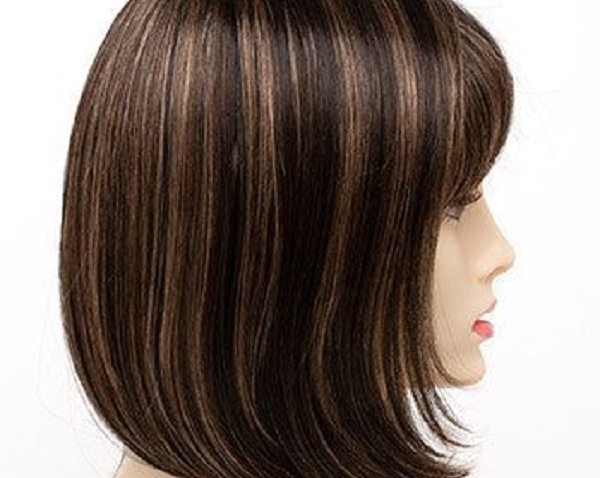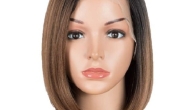
Crafting Quality Wigs: A Step-by-Step Guide
Introduction to Wig Making
The art of wig making can transform the way a person looks and feels. It’s a skill that allows for endless creativity and personal expression. In this section, we’ll dive into the basics of how to make wigs, outline the tools and materials required, and discuss the foundational steps involved in crafting a quality wig.
Learning how to make wigs starts with understanding the components and the process. A wig is made up of a cap that fits on the head and hair that is attached to this cap. The cap serves as the base and must be sturdy yet comfortable. The hair can be synthetic or human, and each type has its advantages.
Wig making is a meticulous process which involves planning, precision and a flair for design. Whether for fashion, costume, or hair loss solutions, creating a wig from scratch gives you the ability to customize for the perfect fit and style. As we progress through the guide, we will explore each step, from selecting materials to the final styling touches.
Materials Needed for Wig Construction
Before diving into the craft of wig making, it’s crucial to gather all the necessary materials. This preparation step is vital for a smooth construction process. Here’s a list of essential items required to craft a quality wig:

- Wig Cap: Acts as the base for the wig. Options include lace, monofilament, and nylon caps.
- Hair: You can choose between synthetic fibers or human hair, depending on preference and budget.
- Ventilating Needle: A specialized tool for attaching hair to the wig cap.
- Thread: Strong and durable thread is needed for sewing the wig cap to ensure longevity.
- Mannequin Head: A stand to hold the wig cap steady while working on it.
- Scissors: Sharp scissors are necessary for cutting the hair and trimming the wig to shape.
- Combs and Brushes: For detangling and styling the hair during the process.
- Glue or Adhesive Tape: Some styles require adhesive to attach hair pieces securely.
- T-Pins: Pins can help in securing the wig cap to the mannequin head.
- Measuring Tape: Ensures accurate measurement of the head for a perfect-fit wig cap.
Each material plays an important role in how to make wigs that are not only well-constructed but also comfortable to wear. It’s important to choose high-quality materials as they will affect the final look and longevity of the wig. Having the right supplies at hand will make the wig making process more efficient and enjoyable.
The Basics of Wig Cap Creation
Constructing a wig cap is a critical step in learning how to make wigs. The cap is the foundation, providing shape and a snug fit on the head. Let’s break down the basics of creating a wig cap.
First, you need to take accurate measurements of the head. Use a measuring tape to record the circumference, front to back, and side to side lengths. These measurements will guide you in selecting or crafting a cap that fits well.
Next, choose the type of cap based on the desired finish. Lace caps offer a natural look with their sheer base, while monofilament caps provide durability and a semblance of scalp. Nylon caps may be more cost-effective and are easier to find.
After choosing your cap, it’s time to prepare it. Secure the wig cap onto a mannequin head with T-pins. This technique keeps the wig cap stable. Ensure the cap is evenly stretched over the mannequin head to avoid an uneven finish. When it’s stable, you can begin the process of attaching hair.
At each stage, keep the end goal in mind. A well-made wig cap leads to a comfortable, secure wig. Plan for ventilation areas and think about where the hairline should lie. These details are vital in how the final wig will look and feel.
By following these basics, you are setting a strong foundation for wig making. With the right measurements, materials, and preparation, your wig cap is ready for the next step: attaching hair.
Choosing the Right Hair for Your Wig
Selecting the ideal hair for your wig is pivotal. It defines the wig’s look, feel, and cost. First, decide between synthetic fibers and real human hair. Synthetic hair is less costly and easier to maintain. It holds styles well but lacks the natural movement of real hair. Human hair offers a realistic look with natural bounce. It can be pricey, yet it’s versatile for styling.

Consider the texture and color of the hair. Options range from straight to curly, and black to platinum blond. Match the hair to your desired style or your natural hair, if the wig is for blending.
Think about hair length. Short hair requires less effort to attach and style. Long hair offers more styling options but may tangle.
Reflect on hair origin as well. Asian, European, and Indian hair are common choices, each with distinct qualities.
Assess hair quality. Remy hair keeps cuticles aligned and is less prone to tangling. Non-Remy hair mixes cuticles and might knot more.
Lastly, ponder the ethical sources of the hair. Choose suppliers who practice fair trade and ensure ethical collection methods.
Your hair choice will influence the wig’s overall quality. It will also affect how to make wigs that meet your personal or customer expectations. Weigh these factors carefully to find the right match.
Attaching Hair to the Wig Cap
Attaching hair to the wig cap is where your creation comes to life. This process, known as ventilating, is intricate and requires patience. To begin, you must decide whether to use a ventilating needle or opt for a quicker method like sewing or gluing wefts of hair.
For a natural appearance, start at the nape of the neck. Work in small sections. Secure each strand with a knot. The double or single knot method can keep the hair in place. For a full head of hair, repeat this process countless times. Keep your loops consistent for an even look.

If using wefts, measure and cut them to the cap’s size. Sew wefts onto the cap from bottom to top. Make sure stitches are small and tight for security.
Gluing is faster but less durable. Apply a thin bond to the cap and press the hair in. Be careful with the amount of glue. Too much can make the wig stiff and unnatural.
This step defines the density and style of the wig. For a thicker look, add more hair. For something lighter, use less. Always remember to add hair with the final style in mind.
Through precise technique and attention to detail, you will see a hairpiece emerge that truly reflects the skill in how to make wigs. As you gain experience, your efficiency and quality will improve. It’s not just about attaching hair; it’s about bringing a vision to life.
Styling and Personalizing Your Wig
Once you’ve attached the hair to the wig cap, the next step is styling and personalizing your wig. This phase is where you can really express your creativity and give your wig the unique touch that suits either your personal taste or that of your client. Here are key points to consider when styling your creation:
- Cutting to Shape: Use sharp scissors to cut the wig into the desired style. Whether you want a bob, layers, or a buzz cut, precision is key.
- Heat Styling: If you used synthetic hair, be cautious with heat. Some synthetic fibers can handle low heat, while others may melt.
- Curling and Straightening: With human hair, you can use hot tools like curling irons and straighteners. Always use a protectant spray to prevent damage.
- Coloring: Adding color can enhance your wig’s look. For human hair, use the same dye techniques as natural hair. With synthetic, use sprays or specialized dyes.
- Final Touches: Incorporate accessories like clips or headbands. These add character and hold the style in place.
- Styling Products: Use gels, mousses, or sprays to hold the hairstyle. Avoid heavy products that can weigh the wig down.
Remember to style the wig while it’s on the mannequin head to get a better idea of the final look. Take your time, and don’t rush the process. Personalizing your wig is an important part of learning how to make wigs, as it’s the stage that truly brings the piece to life and showcases your skill as a wig maker.
Maintaining and Storing Your Handcrafted Wig
After crafting your wig, proper maintenance and storage are necessary to keep it looking fresh and prolong its lifespan. Here are some key steps to ensure your wig stays in top condition:

- Wig Washing: Clean your wig regularly, but not too often. Use wig-friendly shampoos and conditioners. Gently wash the hair to avoid tangling.
- Drying the Wig: After washing, pat the hair gently with a towel. Air dry on a wig stand instead of using a blow dryer, especially for synthetic wigs.
- Combing and Detangling: Use a wide-tooth comb or a wig brush. Start from the ends and work your way up to prevent breakage.
- Styling Products: Apply minimal products. Use only those suitable for wig fibers. Too much product can build up and cause damage.
- Avoiding Heat: Keep wigs away from high temperatures. Store them out of direct sunlight and away from heaters.
- Proper Storage: Use a wig stand or a mannequin head for storage. For long-term storage, keep the wig in a silk or satin bag to reduce friction.
- Rotation: If you have multiple wigs, rotate their use. This reduces wear and tear on each wig and keeps them looking better for longer.
By following these maintenance tips, you can keep your wig looking as good as the day you finished making it. Regular care and proper storage are vital in how to make wigs that stand the test of time. Treat your wig well, and it will reward you with lasting beauty and style.
Common Challenges and Troubleshooting Tips
Once you dive into the world of wig making, you may encounter challenges along the way. From issues with ventilation to finding the right hair density, there’s a range of common hurdles that can pop up. Here are some troubleshooting tips to help you overcome these challenges:

- Uneven Hair Density: If your wig has areas that are denser than others, use a comb and scissors to thin out the thicker sections. Ensure even hair distribution from the start.
- Ventilation Problems: If you’re struggling with the needle and knot method, make sure you’re using the correct size ventilating needle for the hair you’re working with.
- Cap Sizing Issues: If the wig cap doesn’t fit properly, double-check your measurements. Adjust the cap size on the mannequin head before adding hair.
- Tangled Hair: Use a detangling spray and a wide-tooth comb. Work from the ends upward to gently remove any knots without causing damage.
- Coloring Mishaps: When coloring the hair, perform a strand test first. This will help you avoid unwanted colors and damage to the entire wig.
- Styling Difficulties: Practice makes perfect. Start with simple styles before moving on to more complex ones. Watch tutorials if necessary.
- Glue Overuse: If you’ve applied too much glue, use a small amount of adhesive remover. Apply it carefully to avoid damaging the cap or hair.
- Shedding Hair: To minimize shedding, ensure you’re tying strong, secure knots if ventilating and that wefts are sewn in tightly if you’re using them.
By anticipating these issues and knowing how to handle them, your journey on how to make wigs will become smoother and more rewarding.












Leave a Reply